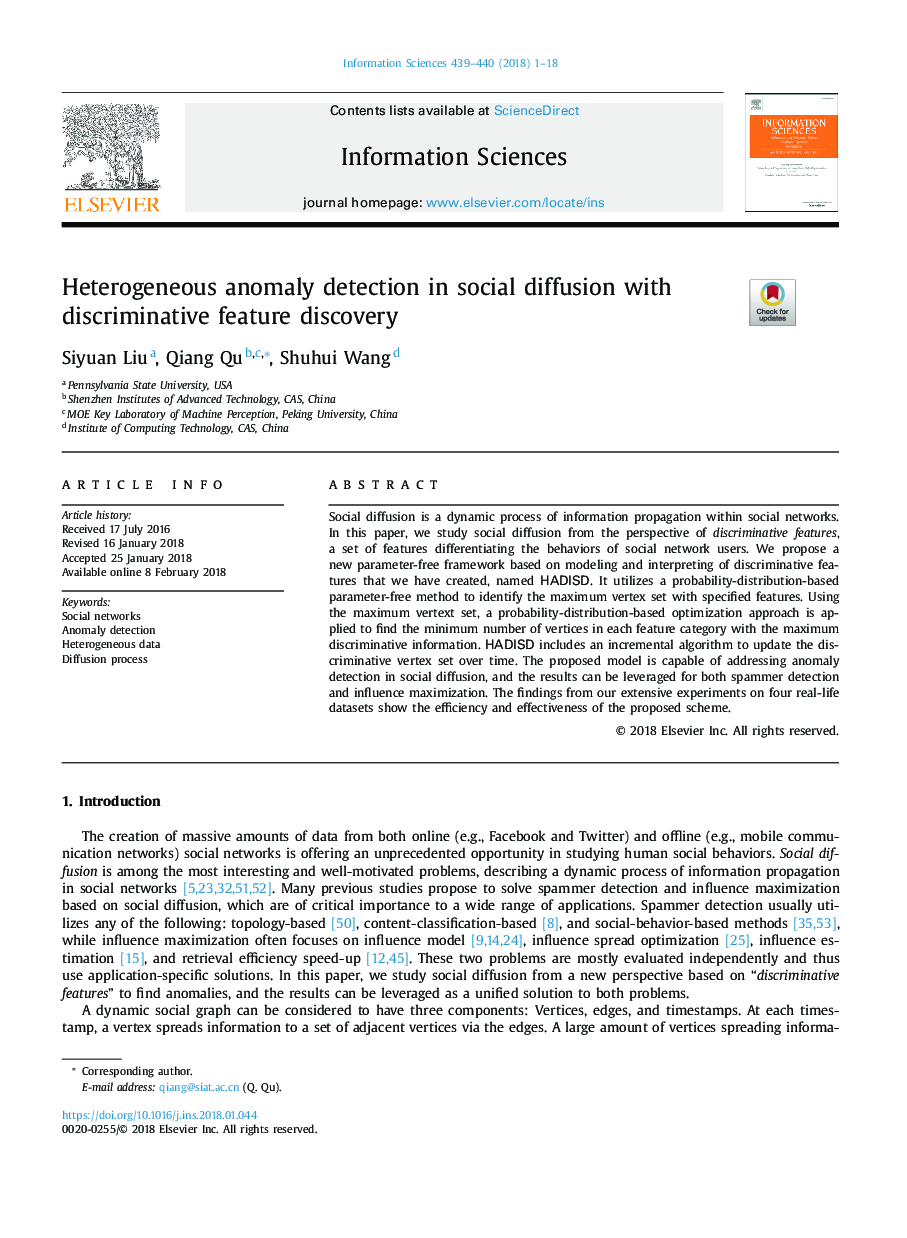| Article ID | Journal | Published Year | Pages | File Type |
|---|---|---|---|---|
| 6856567 | Information Sciences | 2018 | 18 Pages |
Abstract
Social diffusion is a dynamic process of information propagation within social networks. In this paper, we study social diffusion from the perspective of discriminative features, a set of features differentiating the behaviors of social network users. We propose a new parameter-free framework based on modeling and interpreting of discriminative features that we have created, named HADISD. It utilizes a probability-distribution-based parameter-free method to identify the maximum vertex set with specified features. Using the maximum vertext set, a probability-distribution-based optimization approach is applied to find the minimum number of vertices in each feature category with the maximum discriminative information. HADISD includes an incremental algorithm to update the discriminative vertex set over time. The proposed model is capable of addressing anomaly detection in social diffusion, and the results can be leveraged for both spammer detection and influence maximization. The findings from our extensive experiments on four real-life datasets show the efficiency and effectiveness of the proposed scheme.
Related Topics
Physical Sciences and Engineering
Computer Science
Artificial Intelligence
Authors
Siyuan Liu, Qiang Qu, Shuhui Wang,
